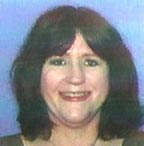1. Website: The Getty
2. Website Address: http://www.getty.edu/
3. Copyright date and/or Last Update: ©2008
4. Author/Organization Credentials: The J. Paul Getty Museum was established in 1954 in J. Paul Getty’s ranch house in Malibu; here he showcased his collections of Greek and Roman antiquities, 18th-century French furniture and European paintings according to the foundation information.
Part of the Getty’s Mission Statement: “The J. Paul Getty Foundation fulfills the philanthropic mission of the J. Paul Getty Trust by supporting individuals and institutions committed to advancing the understanding and preservation of the visual arts locally and throughout the world.”
Copyright Information: “The J. Paul Getty Museum grants permission to download collection images from our Web site for your own personal and non-commercial use, or for fair use as defined in the United States copyright laws.”
"© [2010] the J. Paul Getty Trust. All rights reserved."
5. Web Site Design and Ease of Navigation: The J. Paul Getty web site is probably a little harder to navigate from the homepage, however if a visitor goes to the site map at the bottom of all the pages, they can see what each menu contains fairly easily.
Resources for the Classroom include lesson plans and lesson guides for K–12 grades and adult ESL learners under the “education tab”. This is where I have conducted some of my research, including coping vocabulary terms on the elements of art for a lesson plan, yet I still have a little trouble finding this information. It would be a good idea to make a few changes within this menu to help a visitor find resources more easily.
Under the museum tab you will find the “explore art” menu where the visitor will find great resources including a list containing artist in alphabetical order, types of art, subjects, collection overview and acquisitions. While this site offers numerous resources, I find it a little less user friendly than some of my other favorite websites.
Games for kids can be found under the museum tab, beneath the “explore art” sub tab, here kids can play various games using art for inspiration and education.
6. Response and Recommendation for Use: The J. Paul Getty web site is a great resource for educators, students and anyone who is interested in learning more about art. The site offers a wide variety of subjects to choose from, including Architecture and Room Elements, Decorative Objects and Vases, Drawings, Furniture, Implements and Costume, Manuscripts, Paintings , Photographs and Sculpture, making it a great resource for educators, students, artists, interior designers, photographers and so on. I have used this site to help with my art lesson development for my Art Program Development class this semester; the site has proven to be a great resource for this purpose. Another great feature is the art exhibitions links featuring a wide variety of art subjects from such famous art work as Leonardo da Vinci to the photographs of Frederick H. Evans and other featured artist works. Although I find this particular site a little harder to navigate, it is certainly worth the effort to explore, since it does contain a great deal of good information for anyone who is interested in art. I think it is extremely important to stay informed about art exhibitions as an art teacher and to learn more about current or past trends in art as well, to be considered highly qualified as a teacher. Therefore, I would recommend this site to teachers or other individuals who want to expand their knowledge of the arts.














